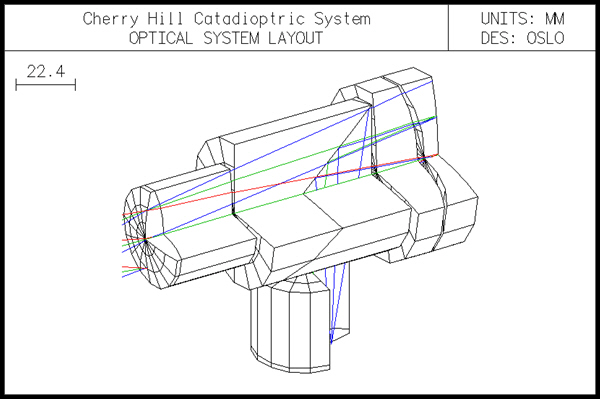Catadioptric Lens: CHERRY.LEN - A Reversible Catadioptric Lens
Cherry contains a beam splitter, catadioptric mirror, and pickup constraints needed to specify a double-pass optical system where a beam passes through the same element in both directions. The system is a high-resolution design that has been adapted for microlithographic applications. This lens is named after the 1985 International Lens Design Conference in Cherry Hill, NJ, where it had the best performance of all designs submitted to the reversible lens design contest. The rules of that contest specified that the design had to meet certain paraxial specifications, and had to have the best performance under the condition that it be completely reversible, in the sense that it had to have identical performance whether it was used forwards or backwards. Most of the submitted solutions were conventional lens forms, but this lens and a few others like it were catadioptric designs that achieved very high performance by using a mirror to accomplish most of the focusing power.


